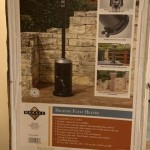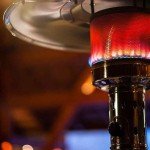Outdoor Patio Electric Heaters: Extending Your Outdoor Season
Outdoor patio electric heaters offer a practical and efficient solution for extending the usability of outdoor spaces beyond the warmer months. These devices provide targeted warmth, allowing individuals to comfortably enjoy patios, decks, and other open-air areas even when temperatures begin to drop. Unlike gas-powered heaters, electric models operate without producing open flames or emitting noxious fumes, making them a safer and often more convenient choice for residential and commercial settings. This article will explore the various aspects of outdoor patio electric heaters, covering their types, benefits, factors to consider when purchasing, and safety precautions.
Types of Outdoor Patio Electric Heaters
The market offers a diverse range of electric patio heaters, each with its own unique design and functionality. Understanding the different types is crucial for selecting a heater that best suits individual needs and preferences. These heaters can be broadly classified based on their mount type and heating technology.
Based on Mount Type:
- Freestanding Heaters: These heaters are self-supporting and can be easily moved around the patio as needed. They typically have a weighted base for stability and are a popular choice for flexible heating arrangements.
- Wall-Mounted Heaters: Designed to be attached to a wall or other vertical surface, these heaters save floor space and provide a more permanent heating solution. They are ideal for patios with limited floor area.
- Ceiling-Mounted Heaters: Suspended from the ceiling or an overhead structure, these heaters provide radiant heat downwards. They offer a discreet and efficient way to warm a specific area.
- Tabletop Heaters: Smaller and more portable than freestanding models, tabletop heaters are designed to be placed on a table, providing localized warmth for those seated nearby.
Based on Heating Technology:
- Radiant Heaters (Infrared Heaters): These heaters emit infrared radiation, which directly heats objects and people within their range. They are highly efficient because they don't waste energy heating the air, making them effective even in windy conditions. Quartz, halogen, and carbon fiber elements are common types of radiant heaters.
- Convection Heaters: While less common for outdoor use, convection heaters warm the air around them. This heated air then rises and circulates, warming the surrounding area. However, these heaters are less effective outdoors, particularly in windy conditions, as the heated air is easily dispersed.
Each type of electric patio heater has its own advantages and disadvantages in terms of portability, heating efficiency, and space requirements. Radiant heaters tend to be the preferred choice for outdoor applications due to their direct heating capabilities and resistance to wind.
Benefits of Using Outdoor Patio Electric Heaters
Electric patio heaters offer a multitude of benefits compared to other heating options, primarily gas-powered alternatives. These advantages include environmental considerations, cost-effectiveness, safety, and convenience.
Environmental Friendliness: Electric heaters produce zero emissions at the point of use. By utilizing electricity generated from renewable sources, the environmental impact can be significantly reduced. Gas heaters, on the other hand, emit carbon dioxide and other pollutants, contributing to greenhouse gas emissions.
Cost-Effectiveness: While the initial purchase price of an electric heater might be comparable to a gas heater, the long-term running costs can be lower, depending on electricity prices and usage patterns. There are no fuel refills or propane tank replacements needed, reducing ongoing expenses. The energy efficiency of radiant heaters also contributes to lower operating costs, as they directly heat objects rather than wasting energy heating the air.
Safety: Electric heaters are generally safer than gas heaters because they do not produce open flames or emit carbon monoxide. This eliminates the risk of fire hazards associated with gas leaks or improper ventilation. They operate quietly and do not require the storage of flammable fuels, further enhancing safety.
Convenience: Electric heaters are easy to operate and require minimal maintenance. Most models feature simple on/off switches or remote controls for convenient temperature adjustment. They do not require any venting or special installation, making them ideal for various outdoor settings. Additionally, they heat up quickly, providing instant warmth when needed.
Quiet Operation: Unlike some gas heaters that can produce noticeable noise, electric heaters operate silently, allowing for a more peaceful and relaxing outdoor environment.
These benefits make electric patio heaters an attractive option for those seeking a safe, efficient, and environmentally responsible way to extend the outdoor season.
Factors to Consider When Purchasing an Electric Patio Heater
Selecting the right electric patio heater involves careful consideration of several factors to ensure optimal performance and satisfaction. These factors include heating area, wattage and power, safety features, weather resistance, and overall aesthetics.
Heating Area: Determine the size of the area you want to heat. This will influence the wattage and number of heaters required. Smaller patio areas can be adequately heated with a single, lower-wattage heater, while larger spaces may necessitate multiple heaters or a higher-wattage model. The manufacturer's specifications should provide guidance on the effective heating area for each model.
Wattage and Power: The wattage of an electric heater directly impacts its heating capacity. Higher wattage heaters produce more heat but also consume more electricity. Consider the electrical capacity of the outlet you plan to use and choose a heater that does not exceed the circuit's amperage rating. Common wattage ranges for patio heaters are 1000W to 1500W for smaller areas and 1500W to 3000W or more for larger spaces. Variable heat settings can provide greater control over energy consumption and comfort levels.
Safety Features: Look for heaters with built-in safety features such as tip-over protection, which automatically shuts off the heater if it is accidentally knocked over, preventing fire hazards. Overheat protection is another important feature that prevents the heater from overheating and potentially causing damage. Some models also include cool-touch housings to prevent accidental burns.
Weather Resistance: Since patio heaters are used outdoors, it is crucial to choose a model that is designed to withstand the elements. Look for heaters with an Ingress Protection (IP) rating that indicates their resistance to water and dust. An IP rating of IPX4 or higher is generally recommended for outdoor use, signifying protection against splashing water.
Aesthetics and Design: Choose a heater that complements the existing décor of your outdoor space. Electric patio heaters are available in a variety of styles, finishes, and colors. Consider the overall look and feel of your patio when selecting a heater to ensure a cohesive and aesthetically pleasing design.
Control Options: Some heaters have straightforward on/off switches, while others offer more sophisticated control options like remote controls, adjustable thermostats, and timers. These features can enhance convenience and allow for more precise temperature control.
Warranty: Check the manufacturer's warranty to ensure that the heater is covered against defects in materials and workmanship. A longer warranty period provides greater peace of mind and indicates the manufacturer's confidence in the product's quality.
By carefully considering these factors, individuals can select an electric patio heater that effectively meets their heating needs while providing a safe and enjoyable outdoor experience.
Safety Precautions When Using Outdoor Patio Electric Heaters
While electric patio heaters are generally safe to use, it is essential to follow certain safety precautions to prevent accidents and ensure proper operation. Adhering to these guidelines will help maintain a safe and comfortable outdoor environment.
Read the User Manual: Always read and understand the user manual before operating the heater. The manual contains important information about the heater's specific features, safety instructions, and maintenance requirements.
Proper Placement: Position the heater on a stable, level surface, away from flammable materials such as curtains, furniture, and dry vegetation. Ensure that the heater is placed in an open area with adequate ventilation to prevent overheating. Avoid placing the heater in enclosed spaces or near low-hanging branches.
Electrical Safety: Use a properly grounded outlet that is compatible with the heater's voltage and amperage requirements. Avoid using extension cords unless absolutely necessary, and if used, ensure that they are heavy-duty and rated for outdoor use. Never operate the heater with a damaged cord or plug, and do not attempt to repair the heater yourself. Contact a qualified electrician for any electrical repairs.
Supervision: Never leave the heater unattended while it is in operation. Always turn off and unplug the heater when it is not in use or when leaving the area. Keep children and pets away from the heater to prevent accidental burns or injuries.
Weather Conditions: During severe weather conditions, such as heavy rain or strong winds, it is recommended to turn off and unplug the heater. Store the heater in a dry, protected location when not in use to prevent damage from the elements.
Maintenance: Regularly inspect the heater for any signs of damage, such as cracks, frayed wires, or loose connections. Clean the heater regularly with a soft, dry cloth to remove dust and debris. Do not use water or cleaning solutions to clean the heater, as this could damage the electrical components.
Carbon Monoxide Detectors: Although electric heaters do not produce carbon monoxide, it’s a good practice to have working carbon monoxide detectors in your home, especially if using any fuel-burning appliances indoors.
By following these safety precautions, users can enjoy the warmth and comfort of their electric patio heater while minimizing the risk of accidents and ensuring safe operation.

The 2 Best Outdoor Patio Heaters Of 2024 Reviews By Wirecutter

The 2 Best Outdoor Patio Heaters Of 2024 Reviews By Wirecutter

The 2 Best Outdoor Patio Heaters Of 2024 Reviews By Wirecutter

Best Patio Heaters 2024 Tried And Tested For All Gardens The Independent

The 2 Best Outdoor Patio Heaters Of 2024 Reviews By Wirecutter

Best Electric Patio Heaters For Homeowners In 2024

10 Best Patio Heaters And Outdoor In 2024
:max_bytes(150000):strip_icc()/infrared-ca969264f834488aa54c2aee62d6c166.jpg?strip=all)
The 9 Best Patio Heaters Of 2024 For Year Long Entertaining Tested And Reviewed

Electric Patio Heater Guide Woodlanddirect Com

The 2 Best Outdoor Patio Heaters Of 2024 Reviews By Wirecutter
Related Posts








